
In an exclusive interview with Verticaa Dvivedi, Editor-in-Chief of SURFACES REPORTER® (SR), Supraja Rao, Principal Designer at Design House, shares insights on her journey to becoming a prominent figure in interior design and art.
Supraja Rao is a renowned interior designer and the Principal Designer of Design House, a firm headquartered in Hyderabad, India, since 1991. She embarked on her career after graduating from college, driven by her entrepreneurial spirit and creative passion. Supraja Rao is self-taught in interior design, having honed her skills through keen observation and self-study. Her firm specializes in various interior projects, with a particular focus on residential design. Over the years, Design House has completed numerous projects across India, Dubai, and the USA.
Even though you dreamt of becoming a textile designer you became an interior designer?
Textile design was my dream profession when I was a teenager in college, but I never pursued it. Instead, I dove straight into interior design, starting work at 20. As a teenager who had an entrepreneurial and creative bent of mind, interior design gradually became my primary profession. I’ve always been one to go with the flow and embrace new opportunities. By the age of 21, I landed up starting my own interior design practice. Three decades later, I still wake up excited to work and visit project sites every day.
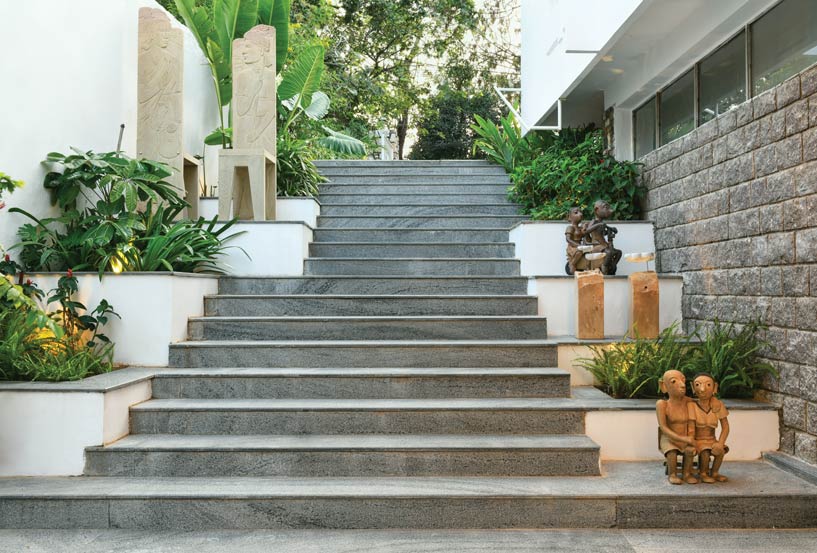
Over these thirty years, you must have encountered challenging times. What helped you to bounce back?
The challenges weren’t just professional; they were about balancing different aspects of life - family, personal needs, and societal expectations, especially as a woman, mother, and wife. Running a business as a woman requires extra effort, even when there’s support from a spouse. I’ve learned to navigate these complexities while staying true to my passion for design.
Balancing work and life must have been quite a journey for you. How did you manage this over the years?
In my twenties, I had ample time to dedicate to work, often working tirelessly even on weekends. However, becoming a mother shifted my focus to finding a balance that honored both my career and family responsibilities. It was a profound responsibility for me to raise our daughter well-rounded, as my father believed that shaping a child well is a great contribution to society. In my thirties, I strived to juggle work, personal life, social engagements, and travel, often feeling overwhelmed by trying to excel at everything. The pandemic provided a rare pause, prompting me to reflect deeply—a period I now recognize as crucial for personal growth and wellbeing.
Reflecting on your journey, what advice would you give to young professionals navigating similar challenges?
I’ve come to realize that success shouldn’t define our lives; instead, finding joy and fulfillment in what we do is paramount.Multitasking, which I used to believe was essential, isn’t always sustainable. It’s important to take breaks and reflect, as these pauses provide clarity and energy to move forward with purpose. Ultimately, life is a journey, not a constant pursuit of goals; it’s about enjoying the process, overcoming obstacles with resilience, and striving for a balanced and fulfilling existence.
Looks like you’re living that life.
As I reflect, there was a time when I was constantly on the move, accomplishing so much, and I was genuinely happy - I wouldn’t say I wasn’t. However, as life matures you, you start to realize there are other ways to live. I used to thrive on the number of projects, speaking engagements, and various roles I juggled. I vividly remember a stretch where my itinerary included Dubai, Nagpur, and America, with a stopover in Hyderabad, covering three continents in just 15 days. At the time, it exhilarated me, but looking back, I understand the toll it took on my body and mind. Why push oneself so hard? So, my advice would be not to push oneself that intensely. It’s crucial to strike a balance and take breaks in between. Don’t get me wrong - I truly enjoyed those experiences, but upon reflection, I wonder if they were necessary.
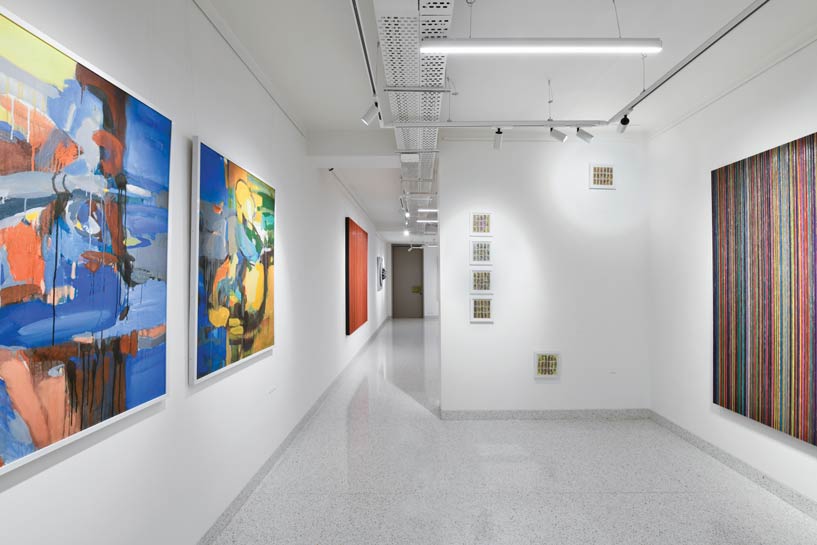
Could you share some memorable projects from your career in interior design in Hyderabad?
I feel incredibly fortunate that early in my career, I gained visibility and recognition for my work, particularly in Hyderabad during the 1990s. Three decades later, it’s humbling to be associated with design at both a local and national level. I don’t take this privilege for granted. In the beginning, I undertook both commercial and residential projects, though residential work always held a special place in my heart. It took a few years to secure my first significant residential project, but once I did, I knew that’s where my passion lay. Designing someone’s home is a profound responsibility because it directly impacts their daily life. It’s a privilege to create spaces that are not only aesthetically pleasing but also comfortable and reflective of their personalities. Many clients have expressed how they think of me daily because of the impact my designs have had on their lives. One client even returned years later to invite me personally to their son’s wedding, saying they couldn’t forget me since I had designed their home a decade earlier. The relationships and trust I’ve built with clients and colleagues over the years are truly rewarding.
Could you describe some of your early breakthrough projects in residential design?
I was fortunate to land many projects. My first breakthrough in residential design came in ‘95 for a prominent client who imported furniture from America, and later in 2000, another client imported hardware from there. These projects exposed me to international standards and trends, which were quite limited back then. I learned about major global brands, designs, and values that were shaping the industry in the West during the mid-90s and beyond. During that time, we undertook a significant project - a former palace of the Paigha family, partially converted into a club by a client. Visiting the palace was an eye-opening experience; it was partially occupied, with even bats residing in some rooms. I distinctly remember the surprise on a Muslim lady’s face seeing a woman working there amidst all men. Those moments remain vivid in my memory, although we didn’t document them well with photographs.Subsequently, we focused heavily on residential projects, gaining momentum with notable clients like Suresh Reddy, a prominent local assembly speaker. In the early 2000s, our minimalist design for a residence gained attention and was featured in several magazines. It changed hands multiple times but still stands as a testament to timeless design. While residential projects became our forte, along the way came commercial projects. We designed an eye hospital, furniture stores, and several boutique shops, which were the talk of Hyderabad at that time. In every project, I challenged conventional norms and never followed trends blindly. I believe in creating designs that stand the test of time, much like my personal philosophy of embracing classic and timeless elements
.
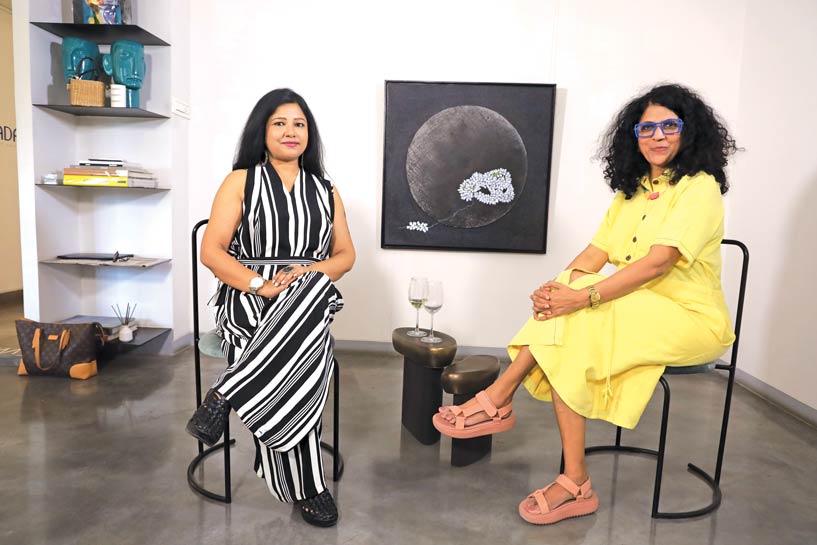
Can you elaborate on your approach to designing spaces?
Every room has a unique emotional role to fulfill. It’s about creating an environment that either relaxes or energizes its occupants. Whether it’s a child’s room that needs to inspire playfulness or a sanctuary for a weary traveler returning from a long trip, I design with the purpose of enhancing the user’s experience. Understanding the specific needs and stages of life of the occupants is crucial. For instance, what a young child needs from their space is vastly different from what a busy professional desires after a demanding day.
I start with understanding the emotional and functional requirements of a space before delving into color schemes, materials, textures, layout, and natural light. Each design decision is driven by how it will impact the inhabitants’ daily lives and emotions. Whether it’s a 20-year-old or a family with multiple children, the design must resonate and adapt to their lifestyles.
Space planning is particularly dear to me as it ensures that the dynamics of a family or individual’s life work harmoniously within the designed environment. I often visit clients’ current homes to understand their daily routines and how best to transition them into their new spaces seamlessly. It’s about creating spaces that not only accommodate but also foster moments of togetherness and shared experiences, essential for a fulfilling home life.
Coming back to art, I’m curious about your art gallery. What are your plans for it?
Yes, indeed. Over the past few years, taking pauses has allowed me to reassess my goals. At different stages of life, your aspirations evolve. Looking back, I’ve realized I’ve surpassed goals set in my twenties and thirties multiple times over. Initially, my focus was on the West, but now my perspective has shifted towards the East and within myself. Throughout this journey, I’ve often adjusted my goals, prompting me to constantly question what truly fulfills me. Family time is paramount. As I have an aging mother to care for, I reflect on how crucial it is to prioritize family. I ask myself, would I appreciate it if my daughter neglected me in my old age? Balancing work and life is essential; I firmly believe work should be a means to express oneself, not consume life. We’ve chosen a five-day work week, but imagine if it were only three days - it’s a choice we make as humans.
What advice would you give young designers struggling with client communication?
Communication can be challenging for young designers, exacerbated by our tendency to over-communicate in today’s world, especially in India. Managing this deluge of information can be overwhelming, with social media democratizing access to both information and people. While this equal access is empowering, it also inundates us with half-baked or excessive information. Experienced designers have learned to navigate this terrain, whereas younger designers may find it more daunting. For instance, while clients once bemoaned the challenges of Vastu, now the prevalence of Pinterest poses new challenges. Clients often come armed with 3D visions that may not align with practical realities. Effective communication is key; clarity, conviction, and confidence in your ideas are crucial. Clients value sincerity and appreciate when you’re upfront about experimenting with new concepts. I often reassure clients that they come to me for creativity and fresh perspectives, which may involve experimentation. With experience, one learns to adapt and refine ideas on the go, using art and accessories to fine-tune and perfect spaces as needed.
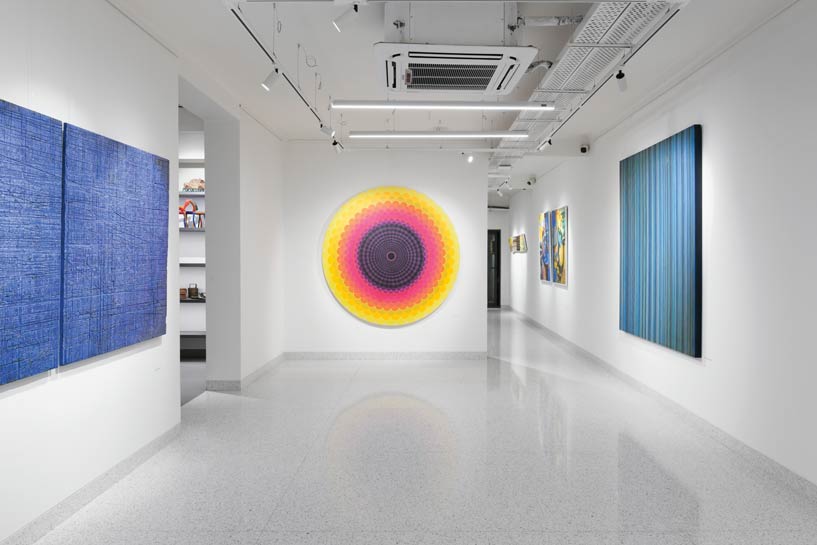
Do you advise designers to visit spaces themselves and make adjustments, even after giving their best efforts?
Absolutely, visualization on computers with 3D walkthroughs is a valuable luxury that should be utilized to its fullest. Yet, feeling the actual volume and scale of a space physically is indispensable. The more you engage in physical visits, the deeper your understanding becomes. Even with over 30 years of experience, I continue to conduct numerous site visits, often even without clients, to truly absorb and feel the essence of the space.
Could you explain your shift to an inward and Eastward perspective in your career and art gallery, and how it shapes your approach?
Historically, our country has been influenced by colonialism, directing our gaze outward towards the West. However, looking inward, we discover immense cultural and spiritual wealth within India. Having traveled extensively, I’ve realized the true treasure lies within our traditions and wisdom. This realization prompted me to explore themes like traditional wisdom in design, highlighting practices that promote well-being, such as mindful eating and sitting postures.
With India gaining prominence globally, do you foresee Indian art and traditional crafts receiving their due recognition?
Craft and art are distinct yet interconnected realms. Traditionally, our craft has been preserved in its original form without much evolution into contemporary design. However, there’s a positive shift happening now where many professionals are integrating crafts into their works, albeit belatedly. For instance, collaborating with craftsmen like the leather puppetry artisan from Anantapur has been a rewarding experience. Yet, for these crafts to thrive, they need not just respect but also financial sustainability, which is still lacking.
Regarding clients sharing Pinterest boards and similar references, how should less experienced designers navigate this situation?
Dealing with client expectations, especially when they come armed with specific visual references, can be daunting for young designers. It requires a delicate balance of respecting the client’s vision while also steering the project towards practical and aesthetic feasibility. It’s crucial for young designers to build confidence in expressing their professional opinions and capabilities, even if it means politely steering clients away from impractical ideas. A solid foundation in design education and apprenticeship under experienced professionals can significantly enhance their ability to handle such challenges effectively.
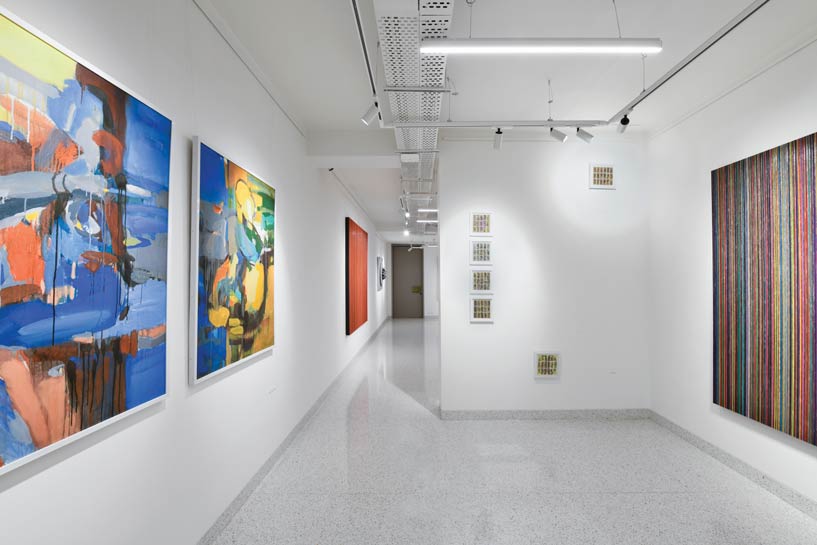
Did you gradually learn about the business side of design over your 30- year career, or was it something you picked up along the way?
Absolutely, everything was learned on the go. Back when we started projects in residential design, there weren’t even MEP consultants involved. Nowadays, projects involve numerous consultants. You have to keep learning and evolving to stay relevant in any profession. A few years ago, during a period of reflection and learning, I participated in a six-week program at the Harvard Graduate School of Design. Living independently in a studio apartment, cooking for myself, and walking to class was a complete shift from my usual routine. People often ask what I learned there, but it was more about unlearning for me. I immersed myself among young participants who were discovering themselves. It was challenging to unlearn my rigid ways of doing things, but it was a beautiful experience that broadened my perspective.
From your learning experiences, how do you think they have influenced your approach to work, life, and how you see and do things?
I don’t limit myself to just design. I explore various activities like taking cooking classes or dance classes. The business of art I am involved in encourages me to explore events like Art Basel and also checkout different museums. These experiences allow me to relax and grow at every stage. It’s crucial to find joy and bliss in what you do, rather than treating each day like a mechanical routine. Embrace each day as a new opportunity, with colors changing like the sky and trees. It’s all about taking life a bit easier.
If you could give a message to your 20-year-old self, what would it be?
I would definitely tell her to take life a bit easier. I used to push myself hard to achieve many things quickly, driven by ambition and hunger. Even now, that drive hasn’t faded.
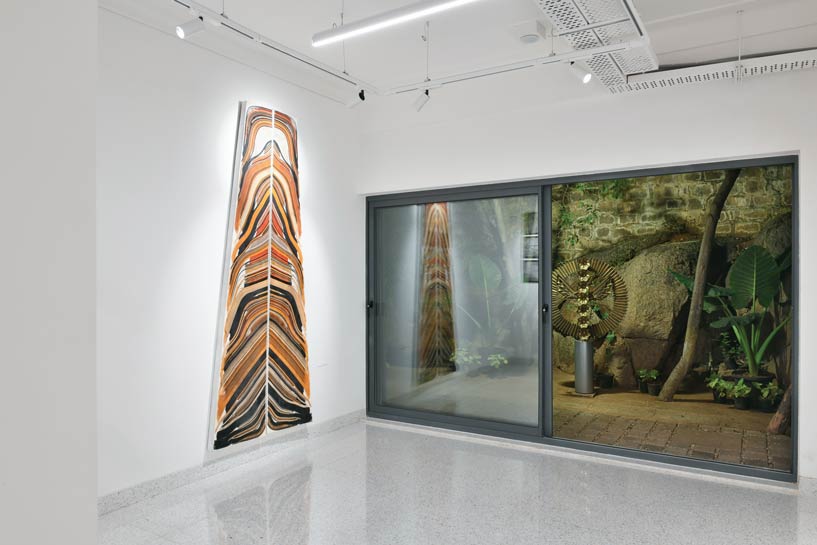
Many people, after experiencing failure or setbacks, often feel discouraged and doubt their capability. What advice do you have for them?
‘Success is one step beyond quitting.’ Each time something doesn’t go as planned or you encounter failure, remind yourself of that. This mindset has helped me push forward tenfold and even a hundredfold. I tell myself this every time: success is one step beyond quitting. In fact, those who achieve success immediately may not sustain it over decades.